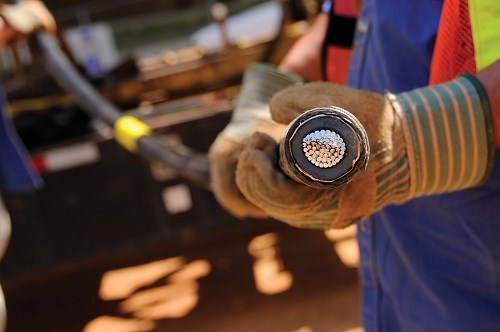Next Gen Crosslinked PE Insulation Compound Gets R&D 100 Award
Dow's third generation TR-XLPE for MV underground cable awarded for extended cable life & enhanced reliability.

Dow Chemicals’ Houston-based 大象传媒 unit received a prestigious 2015 R&D 100 Award for its third generation of TR-XLPE insulation, Dow Endurance HFDC-4202 EC. The 53-yr-old R&D 100 Awards, sponsored by R&D Magazine, Rockaway, N.J., celebrates the most significant technology inventions for the past year.
The new insulation compound was recognized for its patented formulation technology that enables improved performance through extended cable life and enhanced cable reliability, while reducing the system’s total life-cycle cost for electric utility owners.
The C-4202 compound is the “C” version and latest addition to the proven family of Dow crosslinked TR-XLDPE compounds which are premier in their use for insulation of medium-voltage (MV) underground power cables. Since the launch of the “A” version launched in 1983, followed by the “B” version in 2002, E&T has provided enough TR-XLPE compound to produce cables that circle the earth more than eight times. HFDC-4202 EC insulation for MV underground cables is said to offer:
• Enhanced electrical performance--projected longer cable life according to Accelerated Cable Life Tests and Accelerated Water Tree Tests.
• Lower and consistent insulation shield strip force for ease of installation.
• Improved heat resistance—meets 221藲F (105藲C) cable rating.
• Enhanced robustness during cable manufacturing.
• Lower total costs over the lifetime of the system.
Cables insulated with HFDC-4202 EC, meet or exceed certification requirements around the world, including: the Association of Edison Illuminating Companies (AEIC), the Insulated Cable Engineers Association (ICEA), Canadian Standards Association (CSA) and Normas Mexicanas (NMX) requirements for cables rated up to 46 kV. In addition, the product meets Russian GOST R 55025 and European CENELEC standards, as well as enhanced German VDE requirements.
Related Content
-
Fundamentals of Polyethylene – Part 5: Metallocenes
How the development of new catalysts—notably metallocenes—paved the way for the development of material grades never before possible.
-
April 2025: Mixed Bag for Prices of Volume Resins
The end of the first quarter marked higher prices for polyolefins and relatively flat pricing for nearly all other resins.
-
How Compression Ratio Impacts Extruder Performance
Let’s investigate how compression ratio affects performance of an extruder processing LLDPE.







